
Sporti Floating Fins Review: The Best Long Fins for Swim Training
The Sporti Floating Fins are a budget-friendly long blade fin perfect for competitive and recreational swimming. Here’s our in-the-pool review of how they perform in the water.
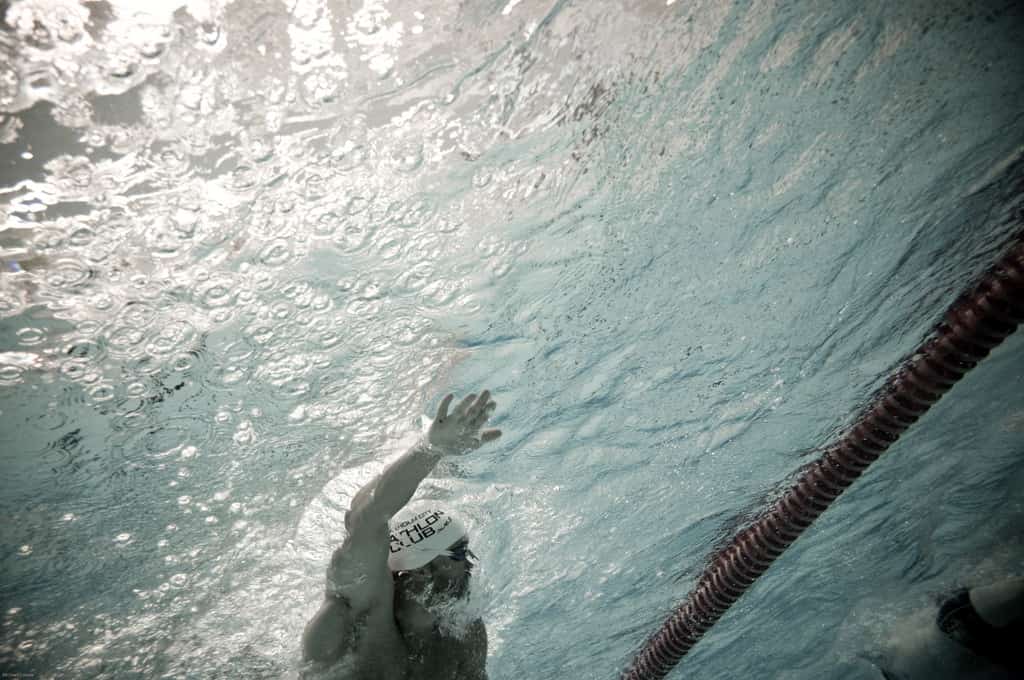
There is a reason the Garmin Swim 2 watch ranks as our top wearable for swimmers. It kicks butt. Here’s a review of why we love this swim watch so much.
Garmin is one of the most popular wearable developers on the planet, and they are especially popular among the endurance set, including runners, cyclists, triathletes, and you know it—swimmers.
They have been in the tracker and wearable business since nearly the beginning and have it pretty well figured out. Garmin’s experience, quality of product, and ease of use are why several of its devices rank in our roundup of the most effective waterproof fitness trackers.
they topped my personal list of best waterproof fitness trackers.
Most of Garmin’s watches have the ability to track laps and strokes in the pool and in open water, but they only have one watch that is made specifically for swimmers—the aptly named Garmin Swim, now in its second iteration.
Here’s what you need to know about this watch made to help swimmers maximize performance and training in the water.
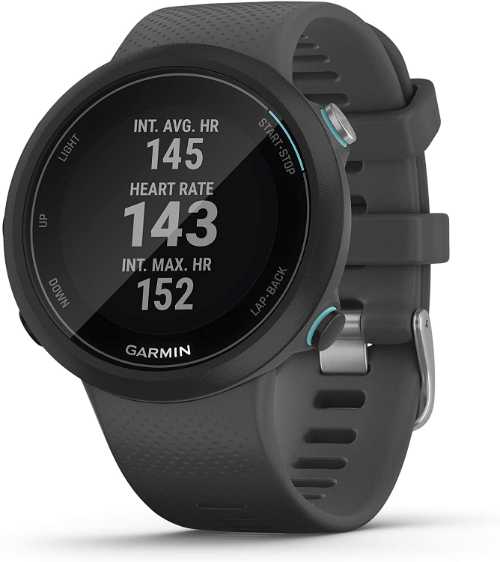
The Garmin Swim is—as you can probably guess by its name—a dedicated watch made for swimmers, both open water and pool-bound.
This is a handy feature for those of us who lose count, or would prefer not to be bothered with counting at all, while swimming at the pool.
Hop in, bang out your workout, and the Garmin Swim will spit out a detailed report of how many laps you did, how many strokes you took, time of swim, etc.
Gamification is a powerful way to get yourself motivation and improving in the pool. One of the best things you can do to become more efficient and give yourself a target in practice is to measure your SWOLF score with each lap.
SWOLF, a combination of “swimming” and “golf” combines your stroke rate (which you want to keep low—as in golf) and overall speed.
For example, if for a 50m lap you did 32 strokes and swam it in a time of :32, your SWOLF score would be 64. Competitive swimmers might recognize this term alternately as “mini-maxi.” One of the most rewarding aspects of getting better in the pool is being able to do the same times with less strokes.
I train at 2-4 different pools each week. The pool set-up can vary between short course meters, long course meters, and when I am on holiday south of the border, short course yards. The Garmin Swim watch is ready to go out of the box—charge it up, input the length of the pool you are swimming in, and off you go.
Are you swimming straight-up freestyle over the course of your entire workout? Some of you (particularly those swimming outdoors in lakes and oceans) might be, but for the rest of us, we are doing an assortment of strokes and drills.
The Garmin Swim recognizes the four main strokes, and a drill logging feature means you can set it to measure and track whatever else you are doing in the pool, whether it’s strapping your butt to a kickboard or simply doing reps of closed fist freestyle.
Stroke recognition is done automatically, while the drill logging needs some inputting.
(Note: The Garmin Swim is not great for tracking kick. During my own swim workouts, whenever I jump on my kickboard and do kick, the watch either doesn’t track it at all or sometimes half-counts it as drill. To track kick properly means manually using the watch.)
One of the big upgrades that happened between the first and second models include adding GPS tracking to the watch.
Obviously, this is a huge feature, especially when you consider that this watch is designed primarily for swimming. Now, open water swimmers have a watch that they can use for both the pool and open water swims.
Another big addition to the second model of the Garmin Swim 2 was the ability to track other types of exercise, most notably running and cycling.
While it doesn’t have all the bells and whistles when it comes to multi-sport tracking, the Garmin Swim 2 can handle the basics, which is a big (and much requested) addition to the second edition of this watch.
Even though the Garmin Swim looks big compared to the wrist-band fitness trackers, it’s surprisingly light, weighing only 1.4 oz.
For swimmers who don’t want to rock out in the pool with a big, clunky device on their wrist, the Garmin Swim is an excellent choice for a swim-ready watch.
No wearable is perfect, and the Garmin Swim has some limitations.
*
The watch retails for around $250 and is available at several online retailers, including Amazon and Swim Outlet.
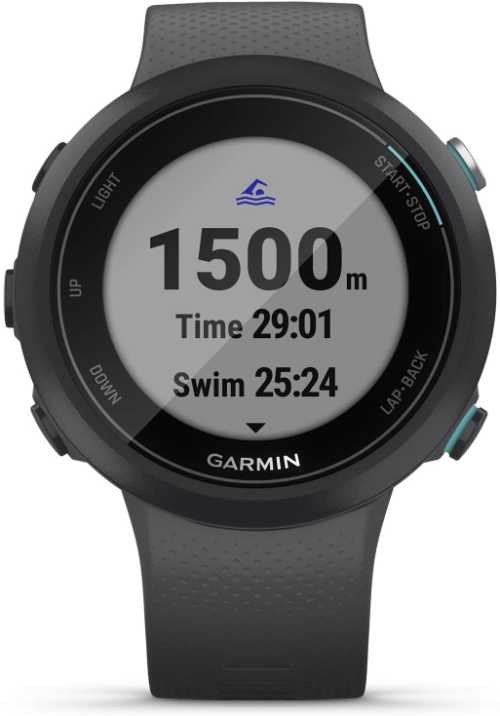


While the Garmin Swim is designed specifically for pool swimmers, for athletes who perform a lot of other activities, including running and cycling, Garmin produces other wearables that incorporate the swim features along with features like GPS tracking, heart rate monitoring, and more.
Garmin’s mega loaded watch, the flagship model, the king of the mountain is the Fenix 56 The Fenix 6 is their top-of-the-line wearable and retails for around $500 and is Garmin’s most feature-rich device.
Beyond including the swim-centric features that aquatic athletes will appreciate, the Fenix 6 features an epic GPS guide that will buzz you if your off-course, best-in-class topographic maps, and highly accurate step and heart rate monitoring. It’s…comprehensive.
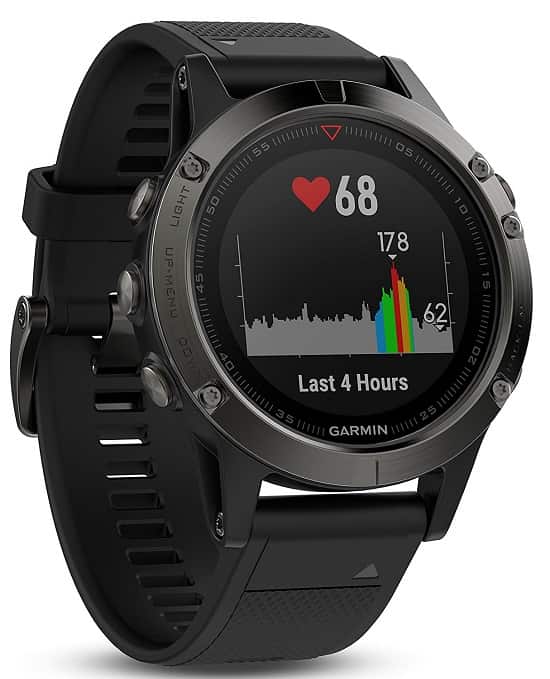

This watch is simply gorgeous and is designed to rival the Apple Watch and the Fitbit Ionic for supremacy in wearable sexiness. It comes close to having all the same features as the Fenix 6, but at a price point that is a couple hundred dollars cheaper. Did I mention how ridiculously good looking this watch is?
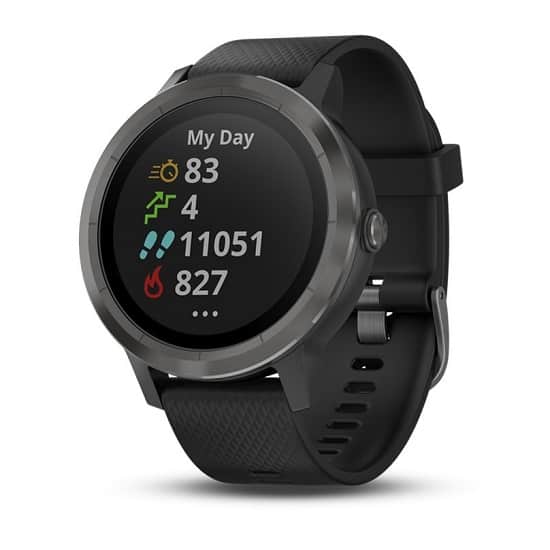

There are a few different editions of the Forerunner (the Forerunner 645 Music gives you the ability to stream up to 500 songs to the watch).
The Forerunner has the same swim features plus a whole bunch of other goodies includes push notifications, a gorgeous 215×180 pixel screen, the ability to measure VO2 max, and all the GPS goodness that Garmin does so well.
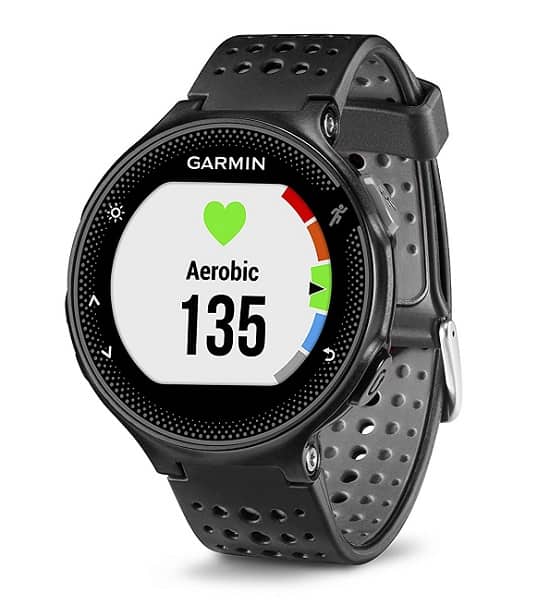

$ = about 100 dollars
The Best Waterproof Fitbits for Swimmers. Fitbit—one of the most popular wearables on the planet—have two waterproof fitness trackers for swimmers. Here are reviews of both of Fitbits waterproof trackers for swimming.
Best Watches for Triathletes. Simple in function and powerful in use, these watches for triathletes and multi-sport athletes will take your training and competition to the next level.

Olivier Poirier-Leroy Olivier Poirier-Leroy is the founder of YourSwimLog.com. He is an author, former national level swimmer, two-time Olympic Trials qualifier, and swim coach.
✅ Free shipping on Orders over $49
✅ Price Match Guarantee
✅ Best selection of gear for training and competition
✅ Fast and Easy Returns

“This is the best book I have ever seen concerning mental training.” — Ray Benecki, Head Coach, The FISH Swim Team


The Sporti Floating Fins are a budget-friendly long blade fin perfect for competitive and recreational swimming. Here’s our in-the-pool review of how they perform in the water.

Swim fins are one of swimmers’ weapons for faster swimming. Here’s how to use them smartly for improving technique, power, and speed.

In the market for a new swim bag? The Speedo Teamster 2.0 carries on the tradition of the original along with some snazzy new features in this review.
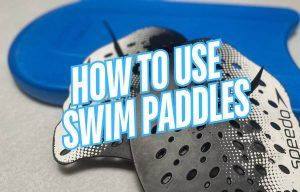
Learn how to properly use swim paddles for speed, strength and technique in the water while avoiding common paddle mistakes. Swim on! Swim paddles are one of the most popular tools that swimmers use to go faster, get stronger, and build better and more efficient technique. They are also a

Looking to add the FINIS Swimmers Snorkel to your training stack but aren’t sure? Here’s how it performs in the water and compares to other swim snorkels.

The DMC Max Elite Swim Fins are a high-performance swim training fin for competitive swimmers. Here’s my hands-on review of these comfortable and lightning-fast fins.